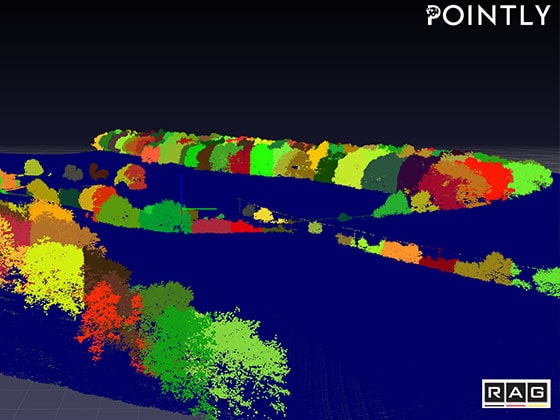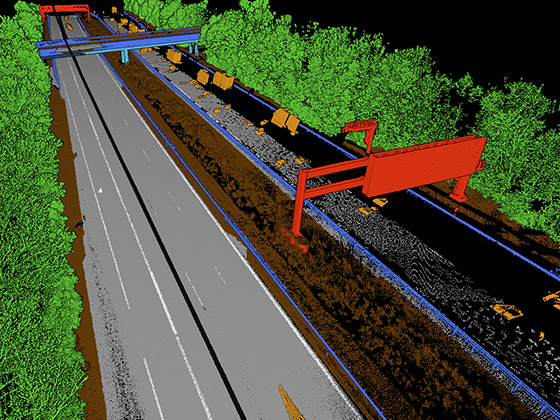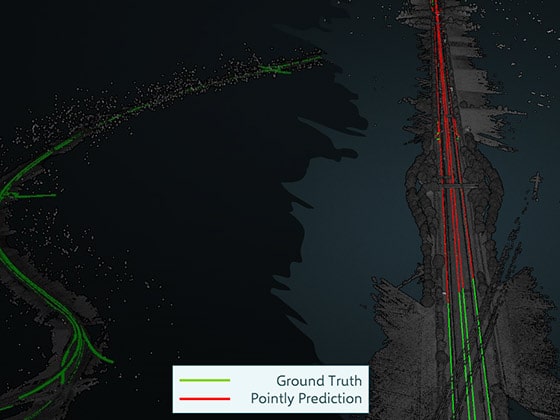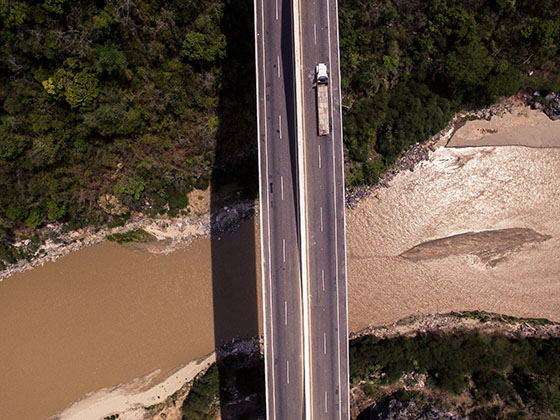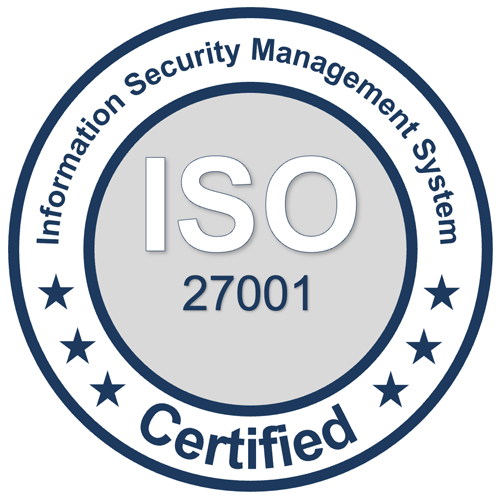We combined deep learning and different smart algorithms to identify tree points and separate individual trees from above, both with visible tree trunks and without. Initially, the vegetation had to be classified manually to generate a comprehensive set of training data for the neural network so the process can be done automatically in the future. However, with the help of Pointly – our self-developed SaaS platform for 3D point cloud classification – and its easy-to-use selection tools this task was performed in just a few days.
We first classified all trees and other objects with Pointly to proceed with instance segmentation of the individual trees. The segmentation was performed using a combination of tree features (such as crown maxima), tree stump positions and geospatial algorithms. Stump position and height were determined for each tree segment, whereas the crown extent was determined by means of 2D projection. Afterwards, the results (classification and instance segmentation) were transferred into other common geo data types (i.e. GeoJSON, Esri shape file), enriched with additional information such as height attributes.
